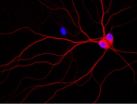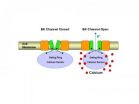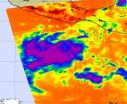(Press-News.org) (Santa Barbara, Calif.) –– In what they are calling a new direction in the study of Alzheimer's disease, UC Santa Barbara scientists have made an important finding about what happens to brain cells that are destroyed in Alzheimer's disease and related dementias. The results are published in the online version of The Journal of Biological Chemistry.
Stuart Feinstein, professor of Molecular, Cellular and Developmental Biology, senior author, and co-director of UCSB's Neuroscience Research Institute, explained: "With dementia, the brain cells, or neurons, that you need for cognitive skills are no longer working properly. Then, they're not even there anymore because they die. That's what leads to dementia; you're losing neuronal capacity."
Feinstein has studied the protein called "tau" for about 30 years, using test tube biochemistry and a variety of cultured cells as models. Under normal conditions, tau is found in the long axons of neurons that serve to connect neurons with their targets, often far from the cell body itself. Among tau's major functions is to stabilize microtubules, which are an integral part of the cellular cytoskeleton that is essential for many aspects of neuronal cell structure and function.
It has been known for many years that a small peptide named amyloid beta can cause neuronal cell death and Alzheimer's disease, although the mechanism for how it works has been poorly understood. Recently, genetic evidence has demonstrated that the ability of amyloid beta to kill neurons requires tau; however, what it does to tau has been
enigmatic. "We know amyloid beta is a bad guy," said Feinstein. "Amyloid beta causes disease; amyloid beta causes Alzheimer's. The question is how does it do it?"
He explained that most Alzheimer's researchers would argue that amyloid beta causes tau to become abnormally and excessively phosphorylated. This means that the tau proteins get inappropriately chemically modified with phosphate groups. "Many of our proteins get phosphorylated," said Feinstein. "It can be done properly or improperly."
Feinstein added that he and his students wanted to determine the precise details of the presumed abnormal phosphorylation of tau in order to gain a better understanding of what goes wrong. "That would provide clues for drug companies; they would have a more precise target to work on," said Feinstein. "The more precisely they understand the biochemistry of the target, the better attack a pharmaceutical company can make on a problem."
Feinstein said that the team's initial hypothesis suggesting that amyloid beta leads to extensive abnormal tau phosphorylation turned out not to be true. "We all like to get a curve ball tossed our way once in a while, right?" said Feinstein. "You like to see something different and unexpected."
The research team found that when they added amyloid beta to neuronal cells, the tau in those cells did not get massively phosphorylated, as predicted. Rather, the surprising observation was the complete fragmentation of tau within one to two hours of exposure of the cells to amyloid beta. Within 24 hours, the cells were dead.
Feinstein explained that tau has many jobs, but its best-understood job is to regulate the cellular cytoskeleton. Cells have a skeleton much like humans have a skeleton. The major difference is that human skeletons don't change shape very abruptly, whereas a cell's skeleton is constantly growing, shortening, and moving. It does this in order to help the cell perform many of its essential functions. The cytoskeleton is especially important to neurons because of their great length.
Feinstein argues that neurons die in Alzheimer's disease because their cytoskeleton is not working properly. "If you destroy tau, which is an important regulator of the microtubules, one could easily see how that could also cause cell death," said Feinstein. "We know from cancer drugs that if you treat cells with drugs that disrupt the cytoskeleton, the cells die," he said. "In my mind, the same thing could be happening here."
INFORMATION:
The Feinstein lab is now at work on the implications of the experiments described in the article.
Co-authors of the article are graduate student Jack Reifert and former graduate student DeeAnn Hartung-Cranston. The Journal of Biological Chemistry has been published for more than 100 years.
UCSB scientists discover new direction in Alzheimer's research
2011-06-07
ELSE PRESS RELEASES FROM THIS DATE:
Adding a Body Kit to Your Car or Truck Can Really Change It's Looks. But If You're Going to Drive it on the Street Are You Concerned About Your Safety? There Are a Few Things You Should Consider.
2011-06-07
Most people who buy a body kit for their car or truck are looking forward to making the vehicle more aggressive, a custom appearance, and completely unique. Yet the last thing that they think of when messing around with their bumpers is safety. It's kind of crazy really, some are willing to risk their safety just so they can look good.
We are proud of what we drive, but we are all unique. We like to show our style, or even enter our vehicle into some car or truck shows. One of the most drastic things that you can do to your vehicle is to add a custom body kit to it. ...
UCLA scientists identify how major biological sensor in the body works
2011-06-07
A biological sensor is a critical part of a human cell's control system that is able to trigger a number of cell activities. A type of sensor known as the "gating ring" can open a channel that allows a flow of potassium ions through the cell's wall or membrane — similar to the way a subway turnstile allows people into a station. This flow of ions, in turn, is involved in the regulation of crucial bodily activities like blood pressure, insulin secretion and brain signaling.
But the biophysical functioning of the gating ring sensor has not been clearly understood. Now, ...
New Foundation Focuses on Keeping Young People Safe Abroad
2011-06-07
A new nonprofit foundation has formed to help protect the safety of millions of young people who travel and study abroad every year. ClearCause Foundation is focused on solving problems within the US $17 billion youth-travel, exchange and study abroad industry without government regulations, including the lack of federal oversight for organizations entrusted to care for youth and students overseas.
"There are literally thousands of youth travel, study-abroad and student-exchange programs, but virtually no government oversight or federally mandated safety standards ...
Jupiter's youthful travels redefined solar system
2011-06-07
Jupiter, long settled in its position as the fifth planet from our sun, was a rolling stone in its youth. Over the eons, the giant planet roamed toward the center of the solar system and back out again, at one point moving in about as close as Mars is now. The planet's travels profoundly influenced the solar system, changing the nature of the asteroid belt and making Mars smaller than it should have been. These details are based on a new model of the early solar system developed by an international team that includes NASA's Goddard Space Flight Center in Greenbelt, Md. ...
GO Campaign, Lemelson-MIT, and P90X Creator Tony Horton Launch Global Search for Innovators, Granting $50,000 in GO Innovation Awards to Inspire Youth to Solve Real World Problems
2011-06-07
GO Campaign, a non-profit organization supporting orphans and vulnerable children throughout the developing world, Lemelson-MIT, and P90X Creator Tony Horton are announcing the launch of GO's global search for innovators and entrepreneurs who are sharing their innovations with youth and inspiring them to create solutions for the real world community problems they face. Up to $50,000 will be granted annually to GO Innovation Award (GIA) recipients.
In addition to inviting participation in the global search, GO Campaign will call for private sector support by corporations, ...
Archive Systems Unveils OmniRIM Records Center
2011-06-07
Archive Systems, Inc., a leading provider of records and document management services, today announced the release of OmniRIM Records Center, a cloud-based solution that gives organizations the power to access, protect and control their business-critical information. It features Archive Systems' acclaimed physical records management functions, seamlessly integrated with electronic records management capabilities to provide secure lifecycle management of a company's valuable informational assets.
OmniRIM Records Center is the first SaaS-solution to unify electronic and ...
Be it numbers or words -- the structure of our language remains the same
2011-06-07
It is one of the wonders of language: We cannot possibly anticipate or memorize every potential word, phrase, or sentence. Yet we have no trouble constructing and understanding myriads of novel utterances every day. How do we do it? Linguists say we naturally and unconsciously employ abstract rules—syntax.
How abstract is language? What is the nature of these abstract representations? And do the same rules travel among realms of cognition? A new study exploring these questions—by psychologists Christoph Scheepers, Catherine J. Martin, Andriy Myachykov, Kay Teevan, and ...
Good youth programs help teens learn to think not just logically, but strategically
2011-06-07
URBANA – Teens develop strategic thinking skills in youth activities that they rarely learn in the classroom, says a new University of Illinois study of 11 high-quality urban and rural arts and leadership programs.
"In school you learn how government is supposed to work. In youth leadership programs, youth learn how government actually works. They also learn how to influence it," said Reed Larson, a professor in the U of I's Department of Human and Community Development.
Strategic thinking involves more than logic; it involves learning to anticipate the disorderly ways ...
Possible first eastern Pacific tropical depression shaping up on NASA imagery
2011-06-07
NASA's Aqua satellite flew over a low pressure system in the Eastern Pacific and captured infrared imagery that show it to be well-defined and organizing. System 91E is shaping up to likely become the Eastern Pacific's first tropical depression of the season.
Located about 425 miles south of Acapulco, Mexico, System 91E is in a good spot for development: warm sea surface temperatures and low wind shear. Those are two factors needed to help a tropical cyclone develop.
Infrared imagery on June 5 at 19:47 UTC (3:47 p.m. EDT/12:47 PDT) from the AIRS instrument that flies ...
Optimalon Software Released New Excel Add-In 1DCutX for Optimal Linear Material Cutting
2011-06-07
Optimalon Software Ltd. has released 1DCutX, an Excel add-in for design engineers and operations managers that optimizes length-cutting operations for manufacturers that do a lot of linear cutting of construction materials. 1DCutX reads data directly from an open Excel spreadsheet, and instantly generates both the graphical layouts and a detailed cutting report within your Excel workbook. 1DCutX can reduce the usage of linear material by twenty to forty percent, compared to manual cutting.
In addition to minimizing raw material waste, 1DCutX saves time, minimizes production ...



